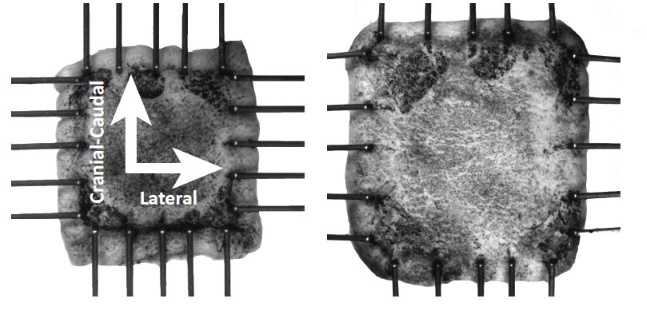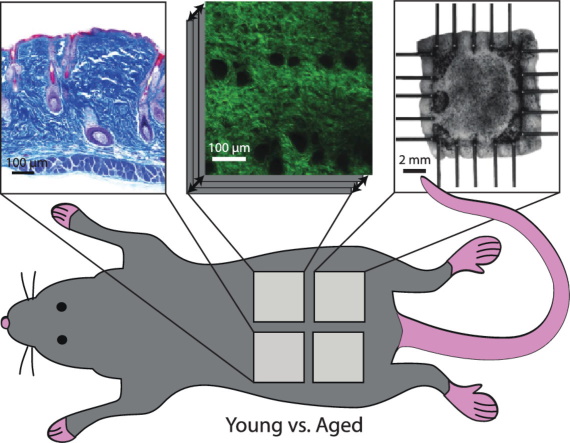How does the mechanical properties of skin differ with region, age and direction of mechanical stress? These vital gaps of knowledge in skin mechanics is being filled by Dr. Manuel Rausch and his team from the University of Texas at Austin. Utilizing mouse skin because of its fast life-cycle and genetic malleability (as well as its popularity as a human skin model in cosmetic and medical science research), the team characterized young (12 weeks) and aged (52 weeks) murine skin using histology, 2-photon microscopy and planar biaxial testing. Histology analysis can tell us the thickness of the skin and the composition of collagen, cytoplasm and muscle within the skin. 2-photon microscopy reveals how collagen is distributed along various direction and depth of the skin, in vitro and in situ. Finally, planar biaxial testing performed with the CellScale BioTester shows strain, stiffness and stretch values in directions lateral and cranial-caudal. Taking it all in consideration, this paper is the most comprehensive report contrasting young and aged mouse skin thus making it invaluable for predictive computational simulations of skin behavior studies.
The images above highlights the 3 main tests performed in this paper (histology, 2-photon microscopy and planar biaxial testing) and the different regions of skin sampled from the mouse.


Read the full journal article here: https://doi.org/10.1016/j.actbio.2019.10.020
Read about Dr Rausch’s research here: http://www.manuelrausch.com/
To read about biaxial testing of a venous valve tissue, click here.








